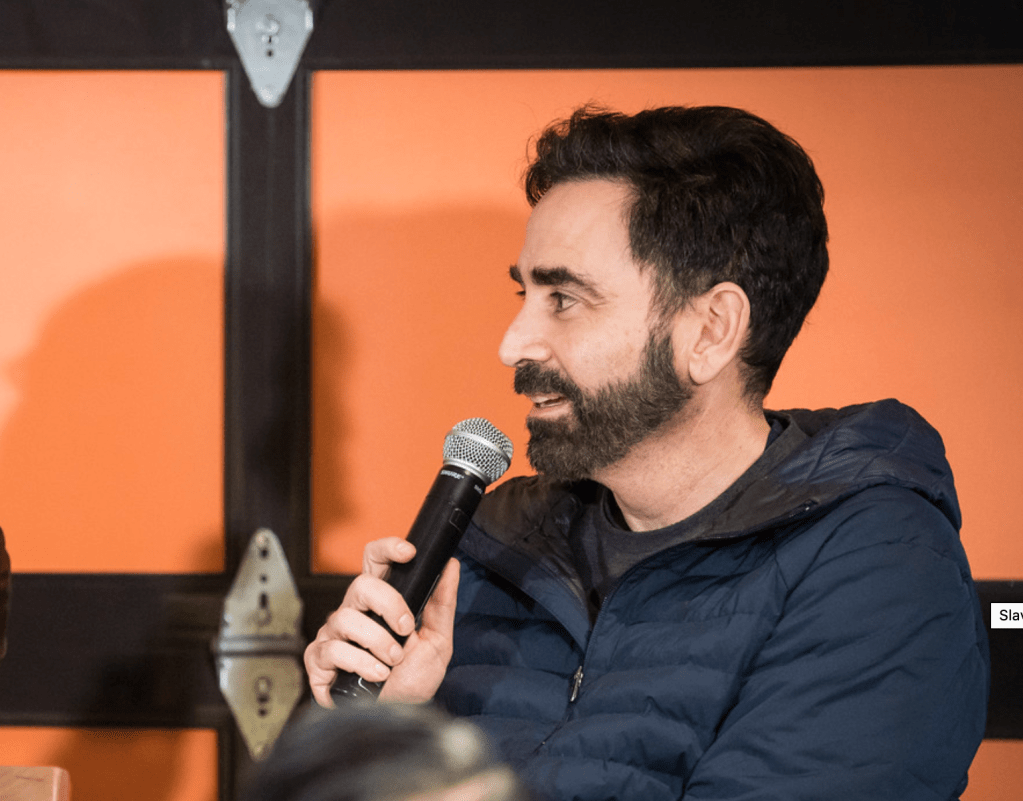
Image Credits:Slava Blazer for TechCrunch /
Elad Gil started betting on AI before most of the world took notice. By the time investors began grasping the implications of ChatGPT, Gil had already written seed checks to startups like Perplexity, Character.AI, and Harvey. Now, as the early winners of the AI wave become clearer, the renowned “solo” VC is increasingly focused on a fresh opportunity: using AI to reinvent traditional businesses and scale them through roll-ups.
The idea is to identify opportunities to buy mature, people-intensive businesses like law firms and other professional services firms, help them scale through AI, then use the improved margins to acquire other such businesses and repeat the process. He has been at it for three years.
“It just seems so obvious,” said Gil over a Zoom call earlier this week. “This type of generative AI is very good at understanding language, manipulating language, manipulating text, producing text. And that’s audio, that’s video, that includes coding, sales outreach, and different back-office processes.”
If you can “effectively transform some of those repetitive tasks into software,” he said, “you can increase the margins dramatically and create very different types of businesses.” The math is particularly compelling if one owns the business outright, he added.
“If you own the asset, you can [transform it] much more rapidly than if you’re just selling software as a vendor,” Gil said. “And because you take the gross margin of a company from, say, 10% to 40%, that’s a huge lift. Suddenly you can buy other companies at a higher price than anyone else because you have that increased cash flow per business; you have enormous leverage on the business on a relative basis, so you can do roll-ups in ways that others can’t.”
So far, Gil has backed two companies pursuing this strategy. According to The Information, one is a one-year-old company called Enam Co., focused on worker productivity, which has been valued at more than $300 million by its backers, including Andreessen Horowitz and OpenAI’s Startup Fund.
Though Gil says he can’t discuss specifics of the private deals, he suggests the approach represents something new. “There used to be these technology-enabled roll-ups 10 years ago, and most of them kind of ended up being not really that much of a user of technology,” he says. “It was kind of like a thin veneer painted on to increase the valuation of the company. I think in the case of AI, you can actually radically change the cost structure of these things.”
Save now through June 4 for TechCrunch Sessions: AI
Save $300 on your ticket to TC Sessions: AI—and get 50% off a second. Hear from leaders at OpenAI, Anthropic, Khosla Ventures, and more during a full day of expert insights, hands-on workshops, and high-impact networking. These low-rate deals disappear when the doors open on June 5.
Exhibit at TechCrunch Sessions: AI
Secure your spot at TC Sessions: AI and show 1,200+ decision-makers what you’ve built — without the big spend. Available through May 9 or while tables last.
Whether the approach proves as lucrative as some of his other bets remains to be seen. Gil has famously backed a host of big brands that have produced riches for their backers, including Airbnb and Coinbase, both of which are now publicly traded, and privately held Stripe, whose valuation has bounced around but reportedly settled in the range of $91.5 billion earlier this year, when its earlier backers bought up more of its shares.
Part of the challenge with roll-ups is finding the right team composition — ideally including a strong technologist along with someone who is “very strong in PE” — and “those things don’t go hand-in-hand,” Gil noted. He said he’s met “maybe two dozen of these teams” so far and mostly looked past them, not because they “weren’t amazing” but because “they still need to sort some things out.”
Gil, who has deep relationships with firms across Silicon Valley, may also find himself competing with them more aggressively on roll-ups as more outfits like Khosla Ventures weigh whether or not they should also be pursuing such deals.
One senses that, either way, Gil is not in it for the money at this point if he ever was. He says his ability to spot trends earlier than most comes instead from the heart. “I love technology, and I love progress, and I love just engaging — both with people who are working on important, interesting things, but also the technology itself.”
When GPT-3 launched, for example, Gil was already experimenting with its predecessor, he said. “When GPT-3 came out, it was such a big leap from GPT-2 that you could just extrapolate out the technology curve. You’re like, ‘Oh my gosh, if this keeps going and scaling’ — all the scaling laws were kind of evident — ‘then this is going to be transformative.’”
That hands-on approach continues today with the small team Gil has assembled, including “people with very deep engineering backgrounds” who “periodically play around with all the AI front-end companies. One person on my team just writes a bunch of scripts and we run them, and we look at performance, and we look at tooling, and it’s super hands-on.”
It’s because of that constant tinkering that, after years of uncertainty in the AI market, Gil sees clear winners emerging. “I used to say, even six months ago, that the more I know about AI, the less I know, because the markets were so dynamic; the technologies were so dynamic,” he said. “And I feel like in the last couple months — maybe the last two quarters — a subset of markets have really crystallized.”
In legal, “we kind of know who the one or two main winners are probably going to be. That’s true in health care. That’s true in customer success and support,” said Gil, who clearly thinks these include his own portfolio companies, which he cited in our conversation.
Among these bets is Harvey, which develops large language models for law firms and in-house legal teams and is reportedly in talks to raise new funding at a $5 billion valuation; Abridge, a healthcare AI company that aims to improve doctors’ clinical documentation workflows (and whose $250 million Series D round was co-led by Gil back in February); and Sierra AI, co-founded by famed operator Bret Taylor, which helps companies implement AI agents for customer service. (The company was valued in the billions of dollars right out of the gate.)
Still, Gil is careful not to declare the game over. “I don’t mean to paint the picture that the game is over or that things are done. I think it’s more that there were two dozen companies that all seemed kind of interesting, and maybe now there’s three or four of them [per vertical]. The map of the likely winners is solidified.”
In the meantime, it’s clear in conversation that this moment represents more than just another investment cycle to him. “I just think it’s a really fun period of time, because so much change is happening, and so there’s just a ton to do,” he said.
Being at the intersection of two transformations — not just betting on the future of AI but on the future of how AI will reshape everything else — is “very exciting,” he added.
We’ll have more from our conversation with Gil — which also touched on guardrails, gatekeeping, and how companies can most adeptly integrate the technologies that will make or break their business — in the newest episode of the StrictlyVC Download podcast, which comes out on Tuesday.

-
 C114 Communication Network
C114 Communication Network -
 Communication Home
Communication Home


